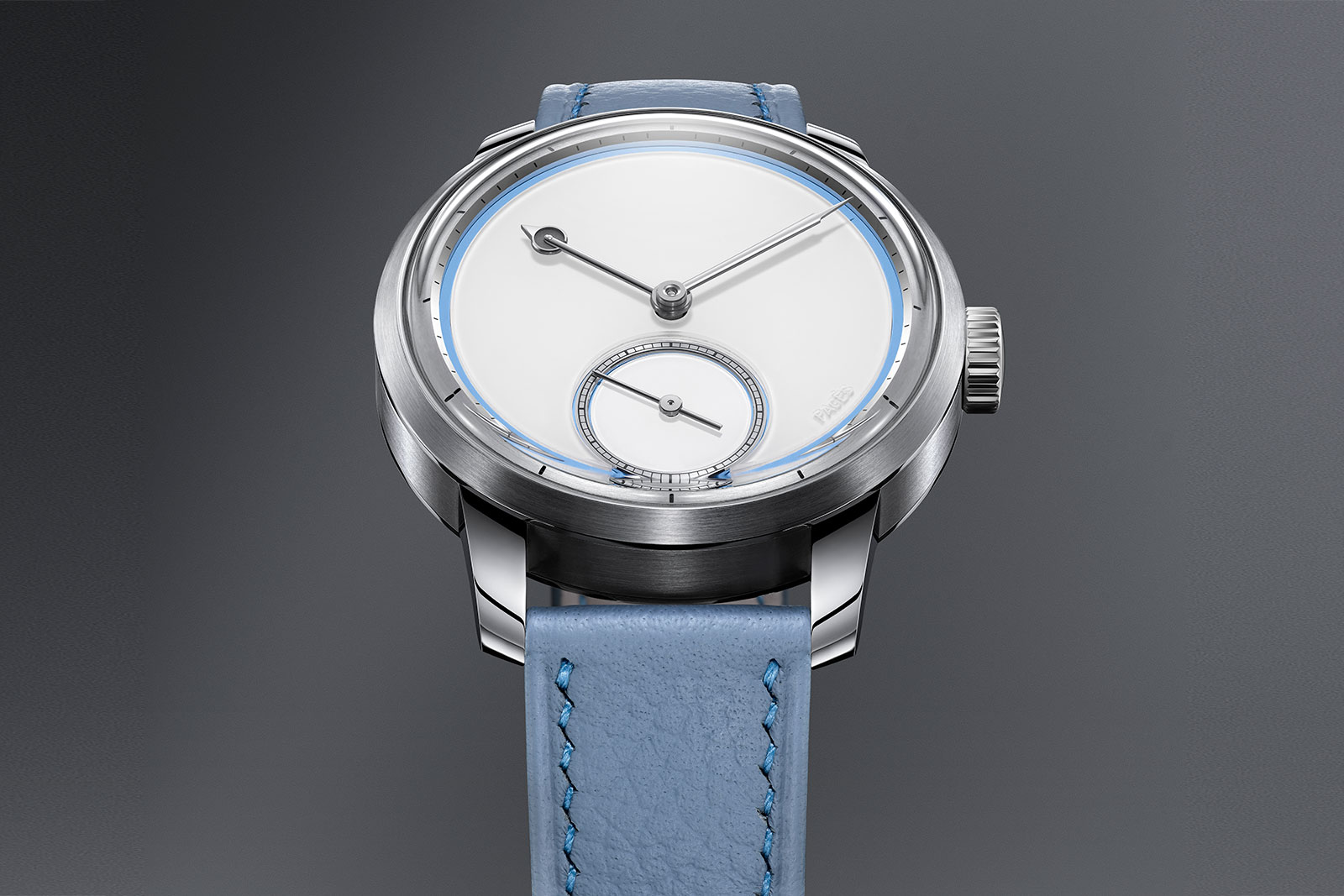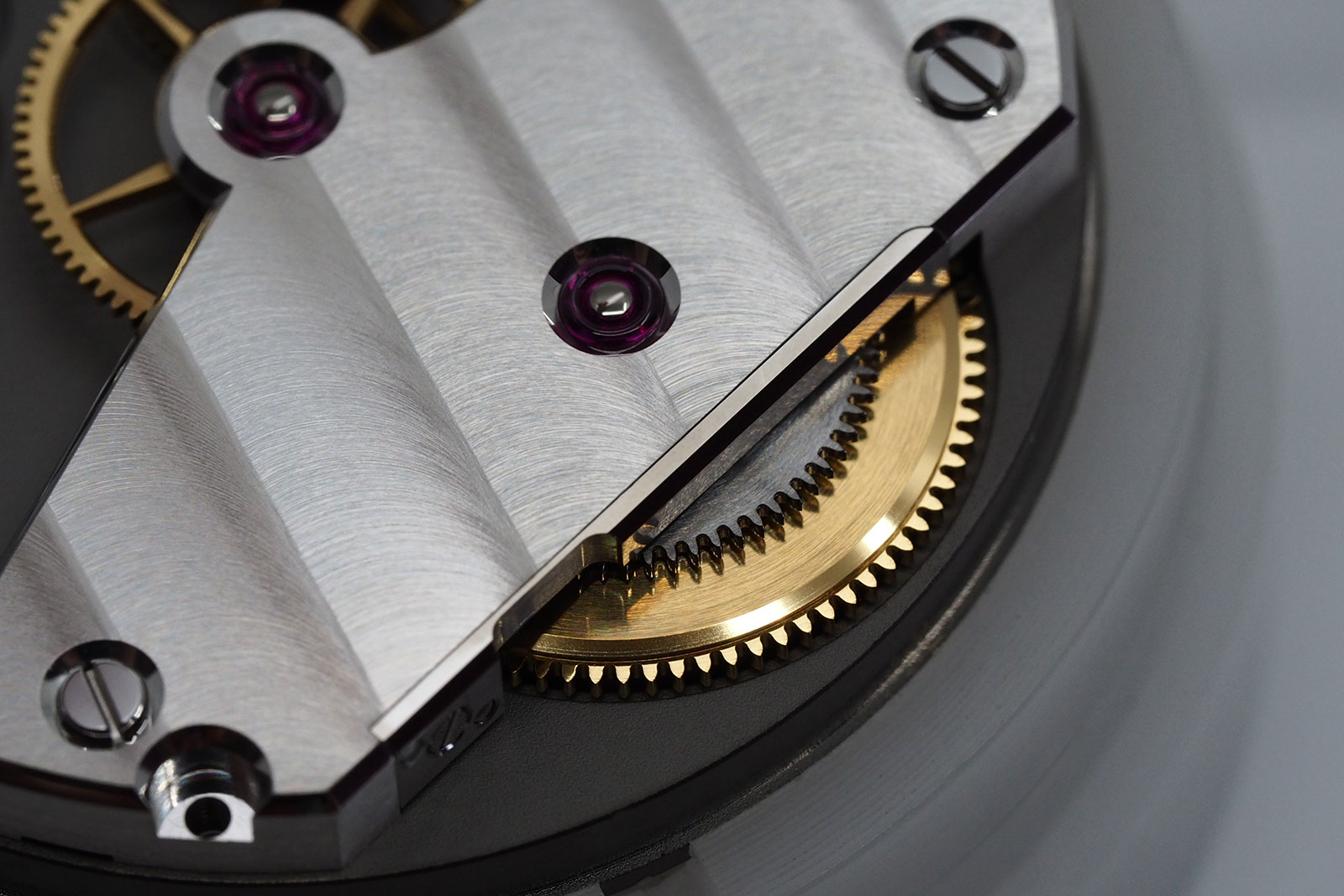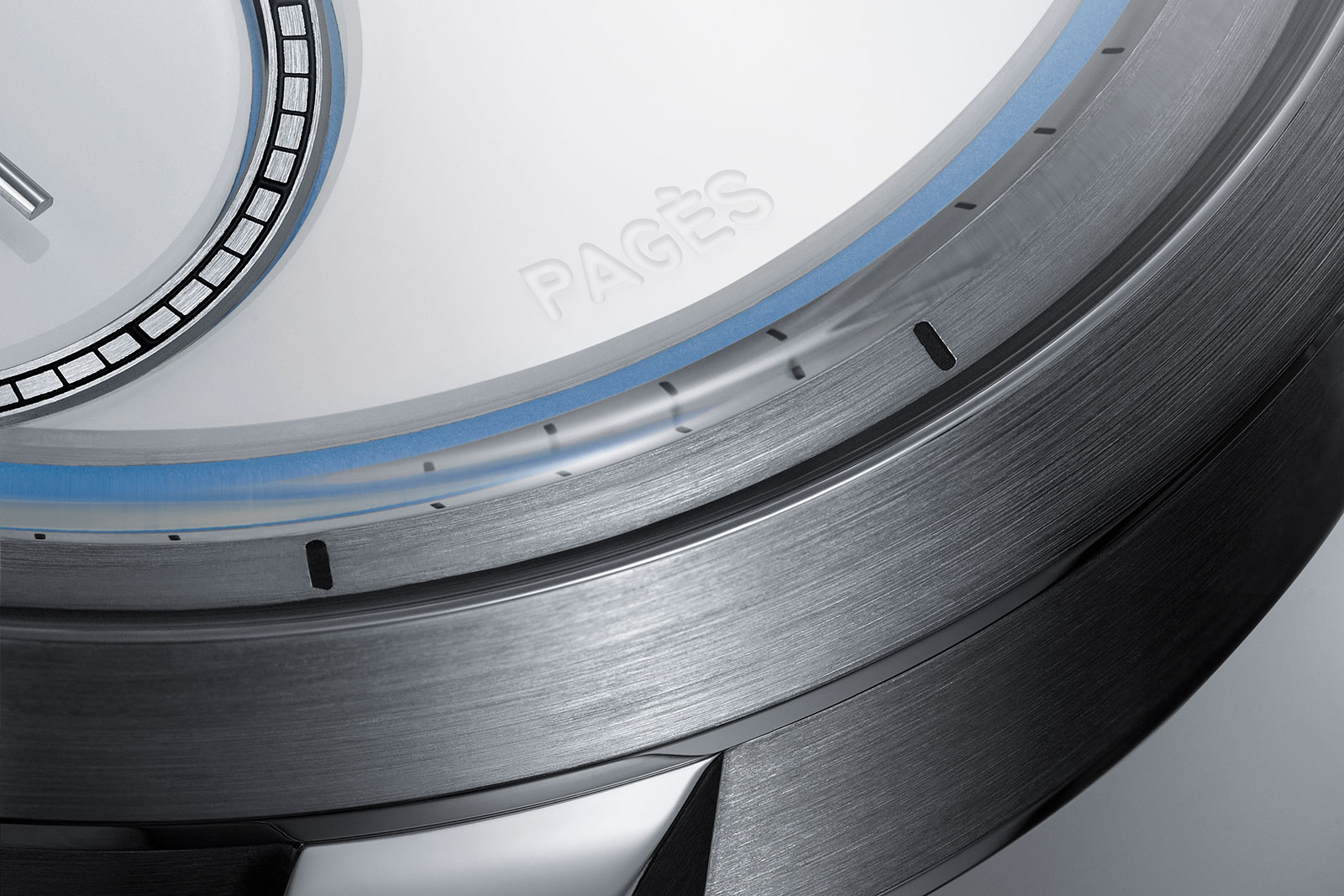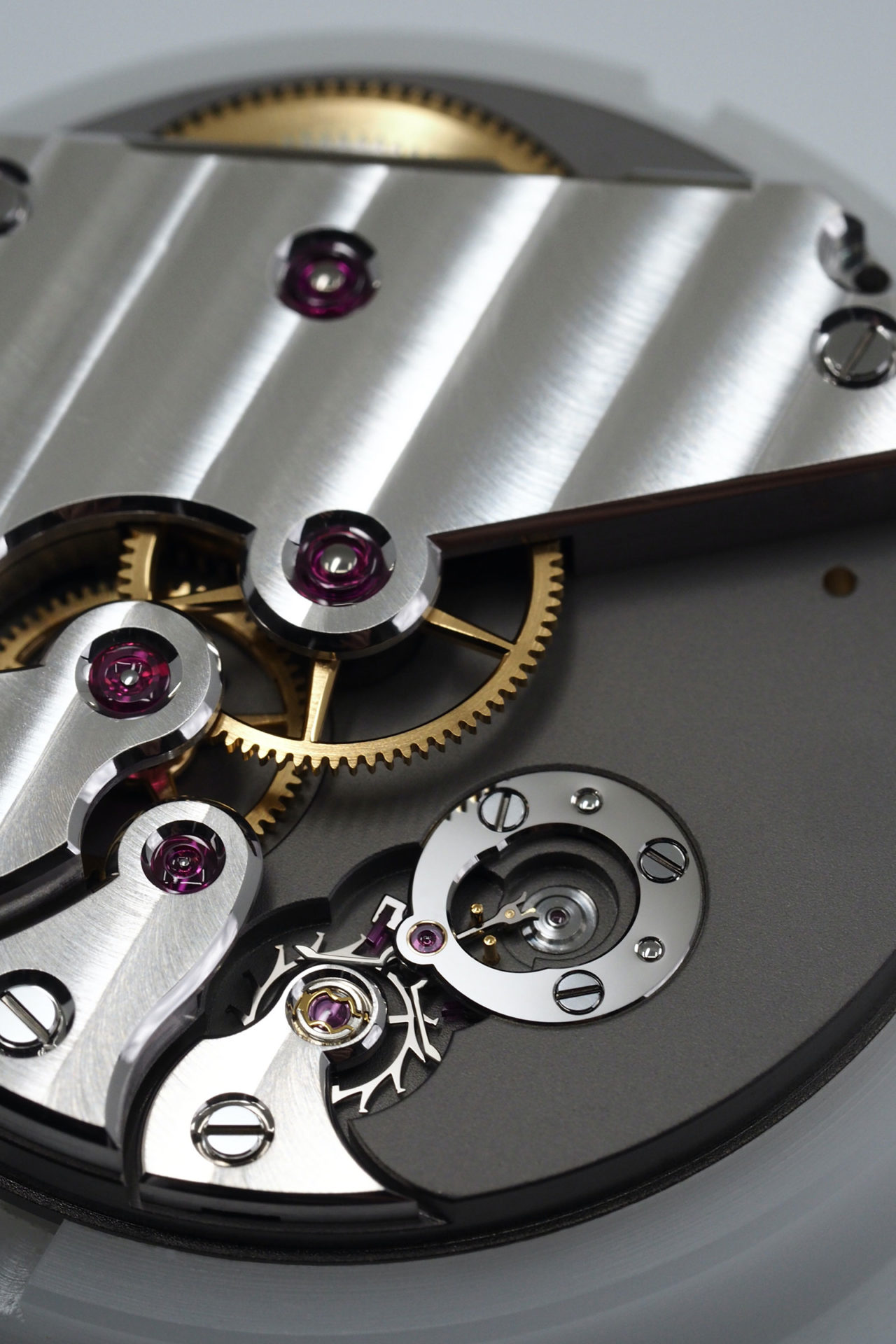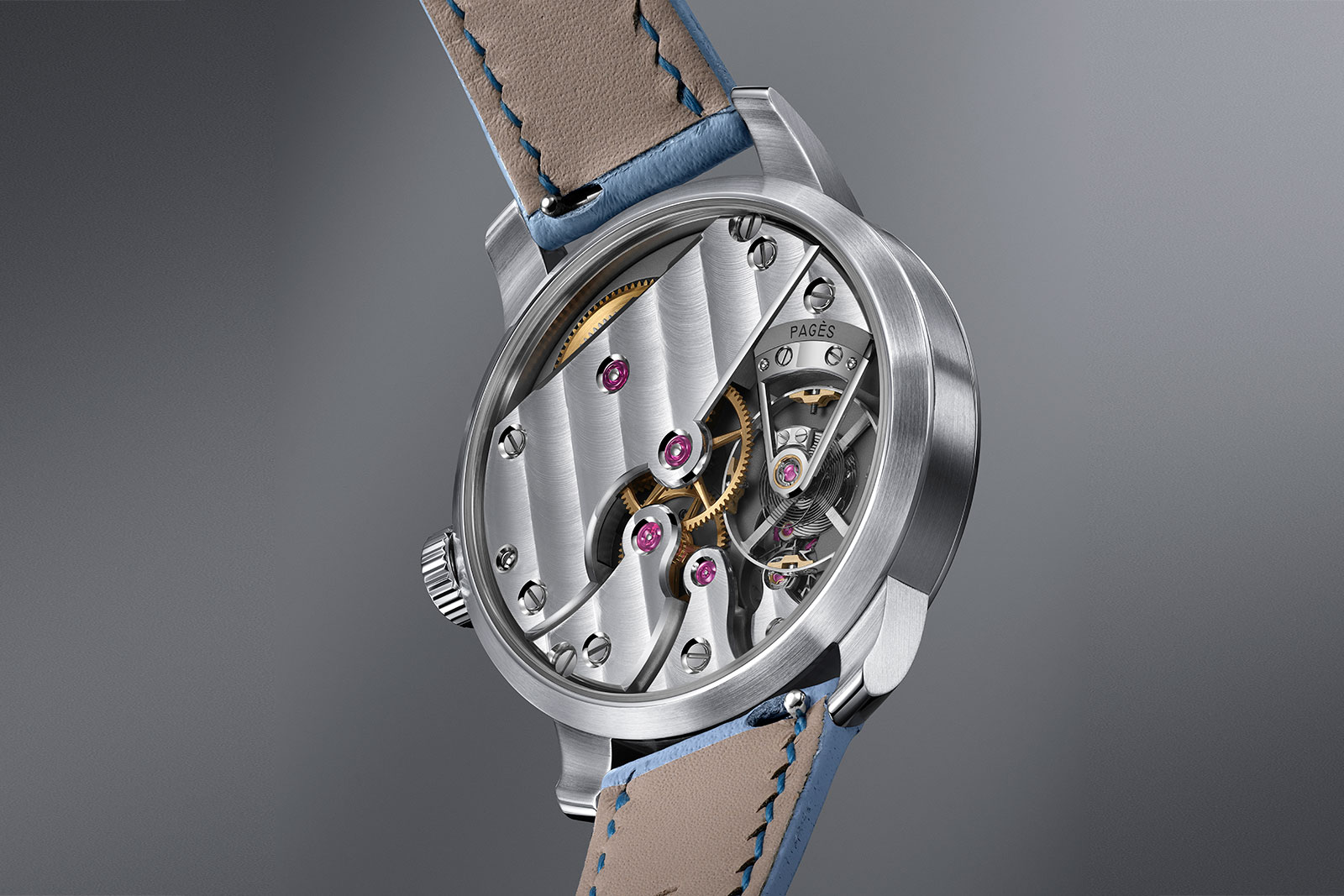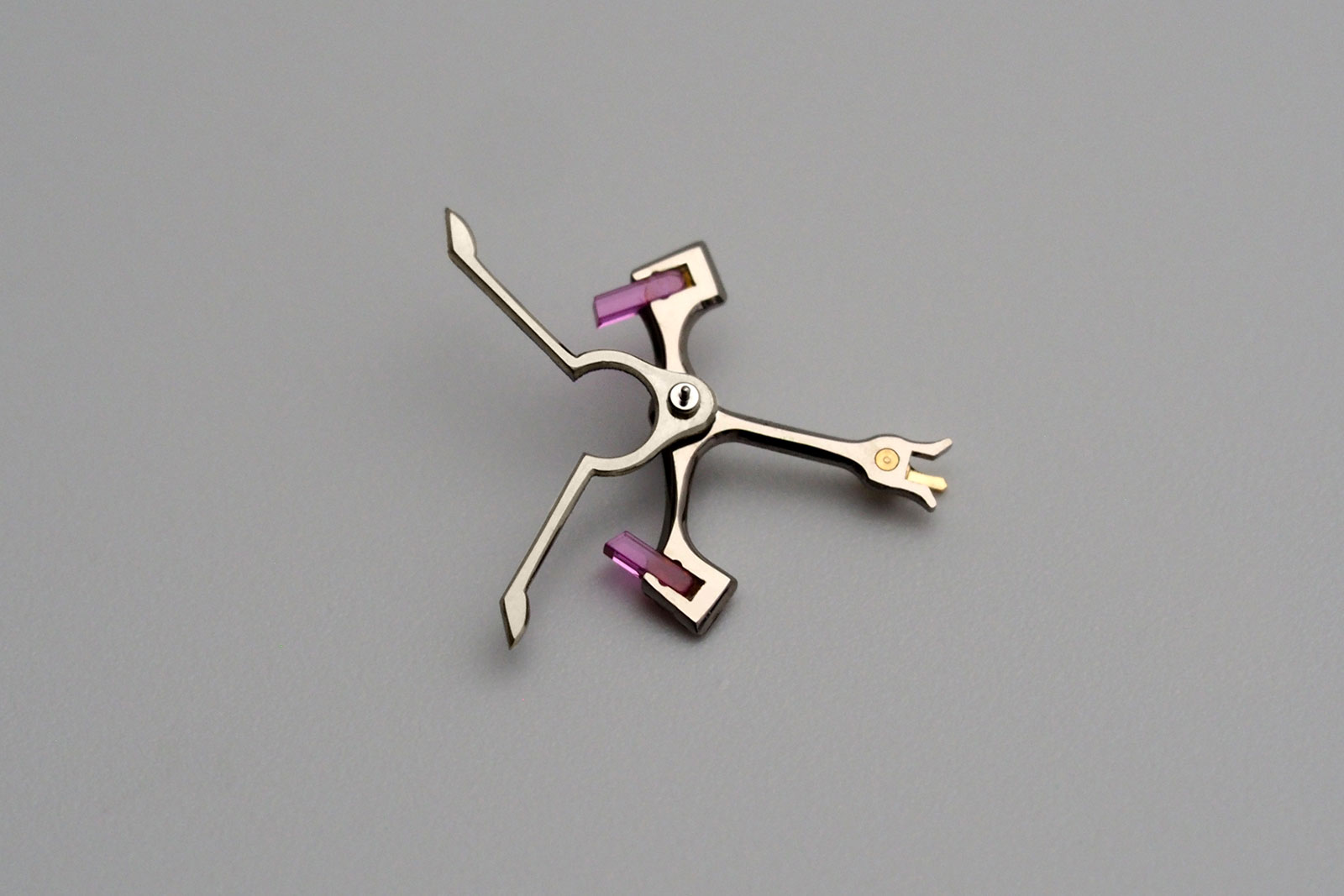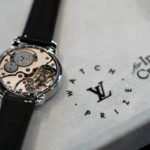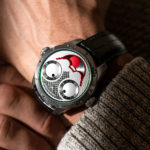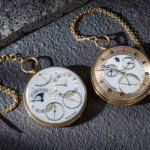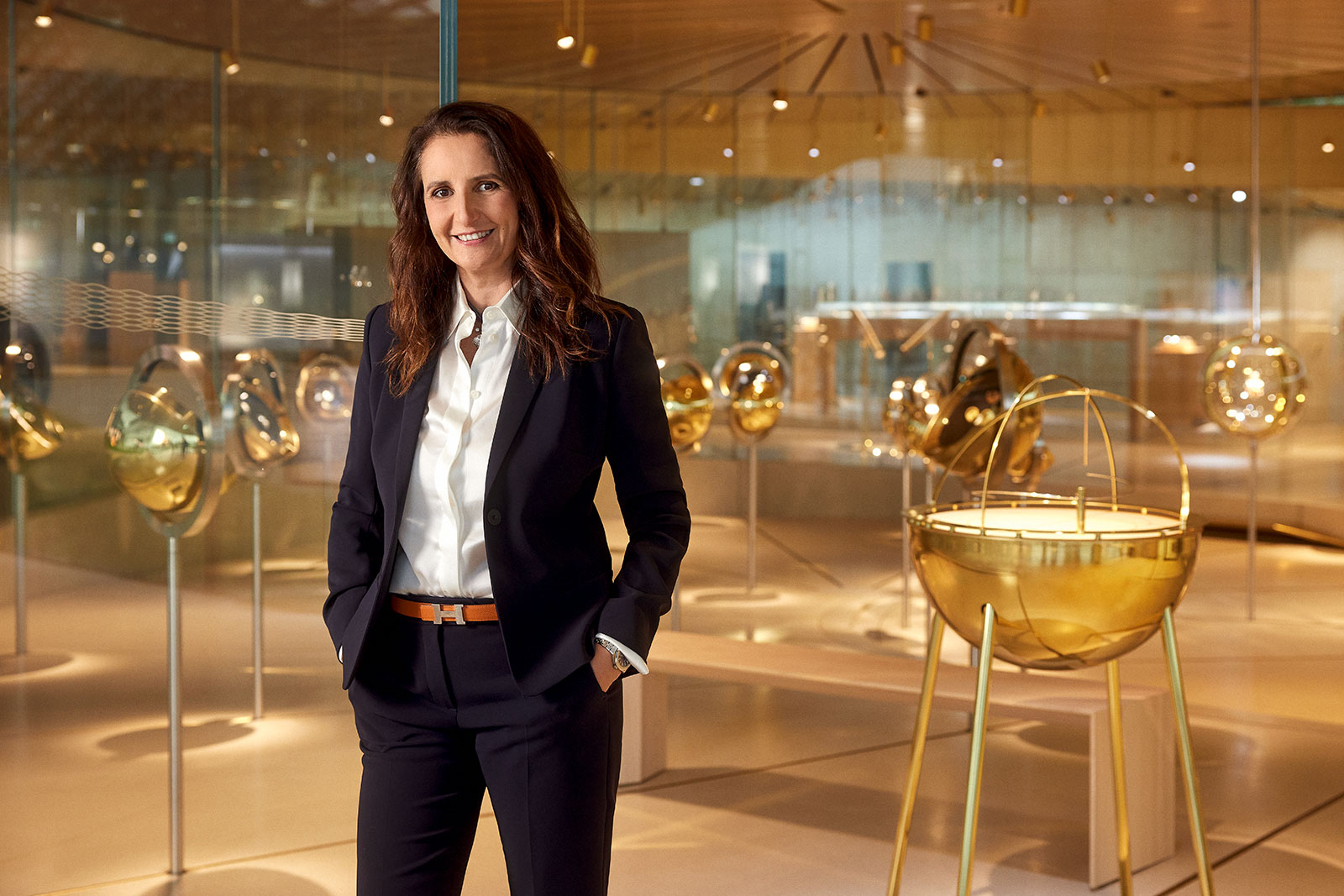The chief executive of Audemars Piguet for just over a year now, Ilaria Resta leads the storied brand into its 150th year. In her short time at the helm, she has already overseen the opening of the expansive, vertically integrated Arc manufacture in Le Brassus as well as the first instalment of the brand’s anniversary celebrations.
Prior to AP, she spent over 25 years in fast-moving consumer goods, first at Proctor & Gamble and then at Swiss fragrance and flavour specialist Firmenich, making her one of the rare outsiders at the top of Swiss watchmaking, a traditionally insular industry.
We recently spoke to Ms Resta about balancing tradition and technology, collaborations, and why there will never be a Royal Oak Star Wheel. Along the way, she dropped a few tantalising hints as to what’s in store for the future,

Ms Resta (right) at the recent opening of AP House Singapore, with member of the brand’s board of directors, Oliverio Bottinelli. Image – Audemars Piguet
This interview was edited for clarity and length.
SJX: Audemars Piguet is in Le Brassus, a town that’s in the historical heart of watchmaking. It’s the only brand of watchmaking’s “Holy Trinity” that’s not in Geneva. How do you think that makes AP special?
Ilaria Resta (IR): First of all, we are there because we were born there. We decided not to move, and we will never move from our birthplace. It is a choice of being true to our legacy and to stay close to the manufacturing. For me, it’s extremely important as a watchmaker that you are in the watchmaking ecosystem of the Vallee de Joux.
We are still living and breathing the very air, in the very same setting that created us. And you’ve been there. You know how it looks today, right? If you look at the pictures of a century ago, you see the same places. Of course we are building a new manufacture, but it is not that much changed over 150 years.

The spiral-shaped AP Museum behind the historical AP building in Le Brassus. Image – Audemars Piguet
SJX: AP is a brand of the future in many ways, the brand makes complicated, modern watches with innovations and cutting-edge materials, yet it is located in this very traditional place as you noted. How do you reconcile hiring talent for tomorrow while being located in such a traditional location?
IR: That’s an excellent question. We have no problem attracting talents because we are such an iconic brand, at the same time an innovative brand. We are not just reliant only on the past, but there are also exciting chapters still to write so that young people, new talents, really want to join us.
SJX: What is the AP of tomorrow?
IR: Defining the capabilities and needs of tomorrow is the first step. We are moving forward but we also honor the complications of the past. We decided to celebrate the anniversary with the perpetual calendar [cal. 7138], which is an existing complication and also one that was important for our historical success. At the same time, we wanted to do the perpetual in a way that is breakthrough from an ergonomic and intuitive standpoint so that the wearer can always adjust the watch and not need any assistance.
Today we are working a lot on three vectors of innovation. One is materials. For us, materials are extremely important. Like BMG, CFT, and I can go on and on and on. But also, mastering existing materials in a new way. Mixing materials, rethinking the decoration of existing materials. That avenue requires certain expertise which is not necessarily found in watchmaking, so we tap into university expertise and we hire people.
Then another vector is decoration, which is a different type of expertise. When I look at the future, I want also to preserve the rare jobs of watchmaking, like decoration, enamel, engraving, gem-setting, which are very traditional.
And last but not least, ergonomics on the wrist, ergonomics in terms of different places to wear the watch – not just the wrist.
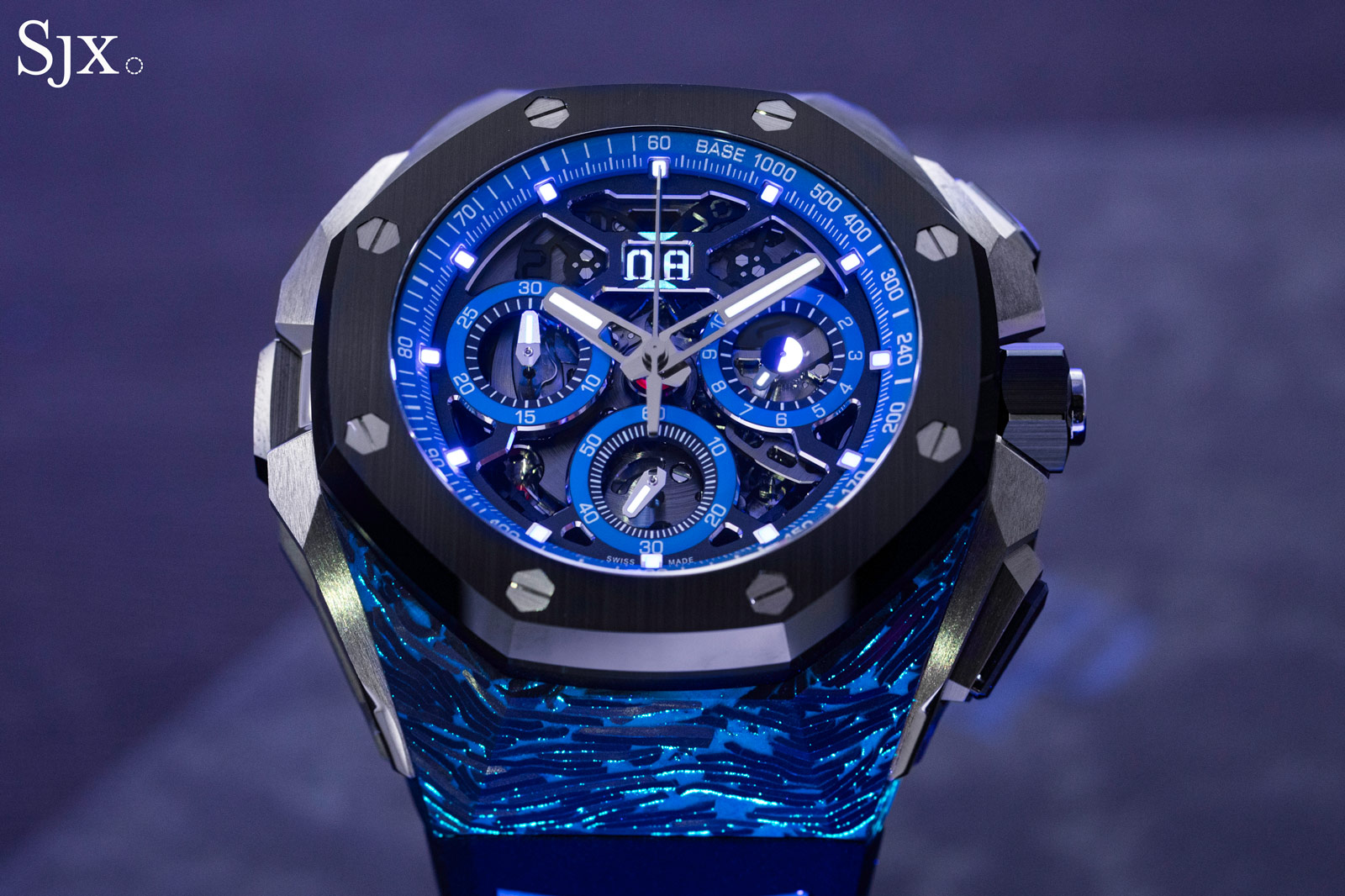
The brand’s latest proprietary material, CFT, which incorporates dyed, luminous carbon fibre filaments
SJX: To talk specifically about materials, AP has been cutting edge in terms of the case materials, but your movements are still traditional, high-end fine watchmaking. The moving parts are still steel, brass, gold. You don’t use a lot of silicon for example.
IR: We don’t use silicon at all.
SJX: Is that something on your radar, or do you feel that the brand should stay traditional?
IR: That’s a strategic and manufacturing choice not to use this material because this will diminish the mechanical role of the watch. This is a material that cannot be repaired and as such, it doesn’t belong to the history of mechanical watchmaking. So we refuse to use that material.
SJX: So basically you’re saying that advanced materials will be more for the external aspects of the watch, while the case, dials, and movements will still be traditional.
IR: The movement will still be a mechanical movement as defined by mechanical movement materials. That’s for sure. Will there be new materials in the future? Potentially yes, but not materials that are not conforming to the codes of mechanical watches, which need to be able to be repaired. Silicium doesn’t belong to that. Silicium is replaceable.
What we’re trying to do is push forward with innovation but still be true to the dimension of the mechanical watch.
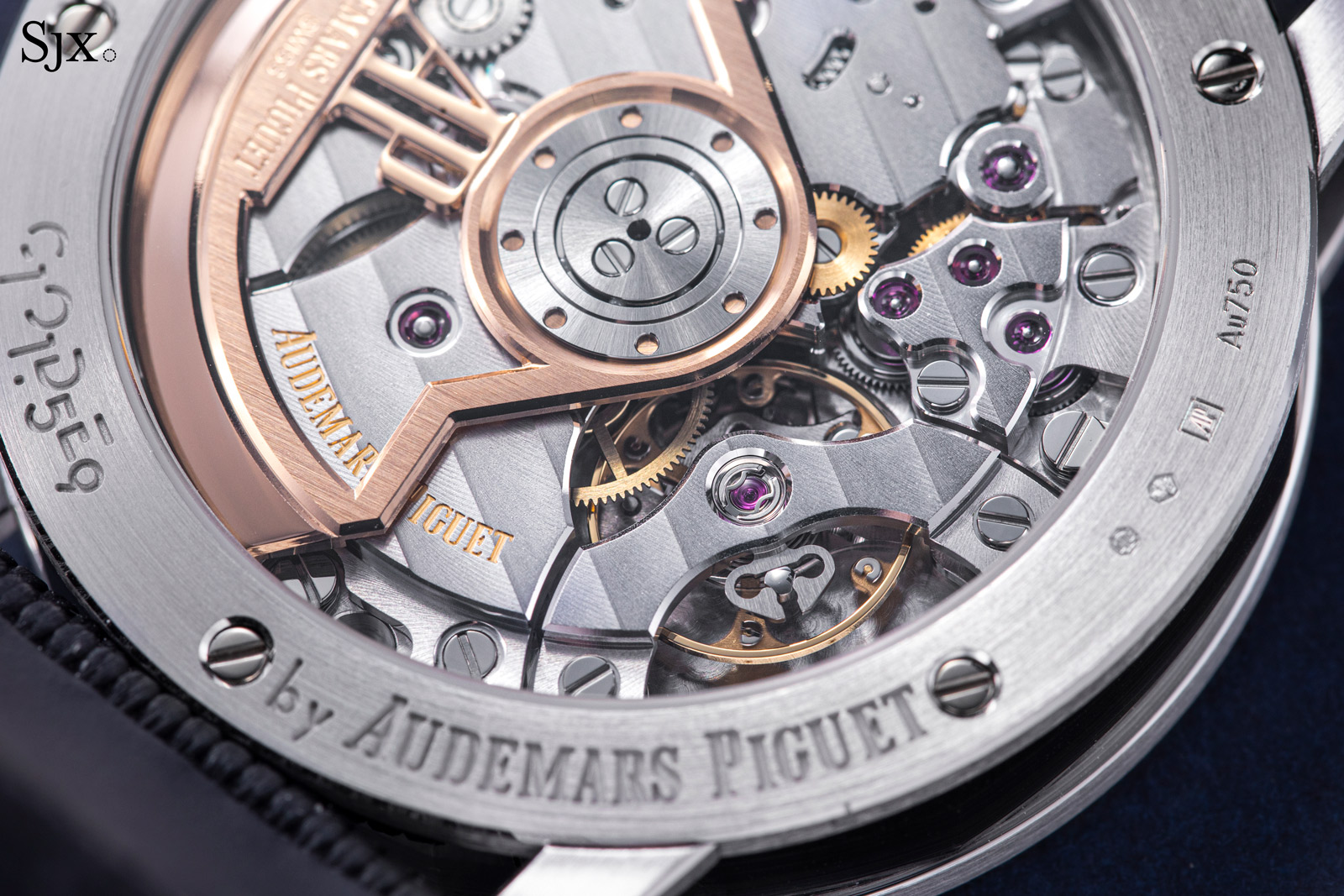
A latest-generation AP movement but one entirely executed in traditional materials
SJX: I think one way AP was a pioneer was the brand’s approach to distribution and retail, because it was one of the first watch brands to go almost entirely towards its own distribution network. What are your thoughts on this in terms of how it’s developed and the future?
IR: It’s a strategy of client relationships, a client-centric focus. I think that it was an important choice to make the brand future-proof as well, because by managing your relationships, managing the insights of the clients, only then can you continue being relevant for them and ensure that our story is authentically explained.
We need to continue evolving of course what was right in the past will not necessarily be right in the future. We are continuing with this client-centric strategy, also speaking to the prospective clients of tomorrow and understand how they live, how they shop, how they build emotional connections. We are staying always alert because it might change. For the time being, the format works extremely well.
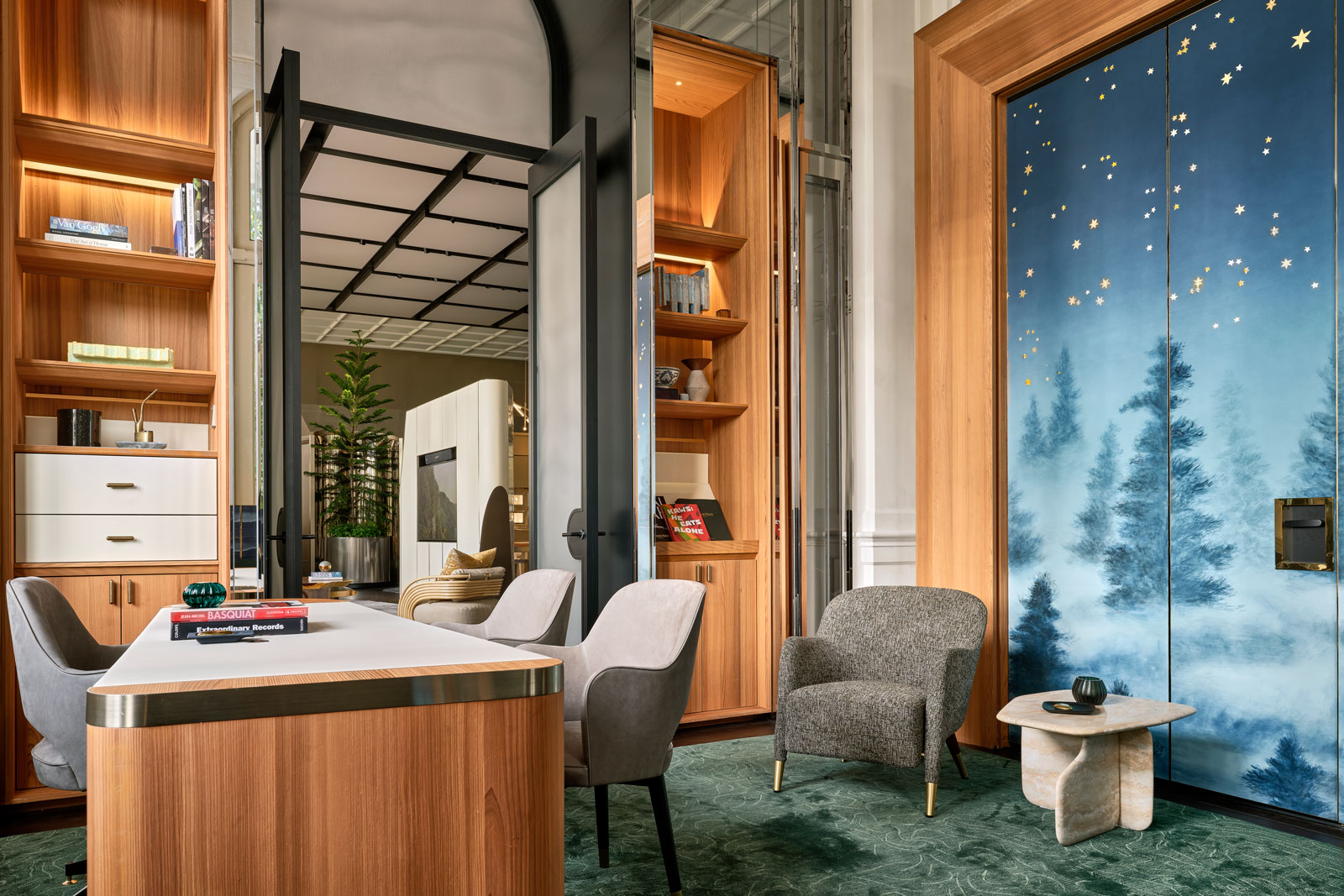
The interior of AP House Singapore, the brand’s latest “house”. Image – Audemars Piguet
SJX: You mentioned future-proofing the brand. What, in your opinion, is some of the future risks for the brand?
IR: I think we need to always stay authentic and true to our past. We cannot stretch into spaces where we do not belong just because we want to follow trends. Sometimes when you want to be future looking, to be relevant to new clients, the temptation is to change. But you need to evolve, not change. So that’s the risk, it’s to go outside of our path.
SJX: So can I take it that you are saying AP will not diversify into other product lines like perfume or luxury goods?
IR: We will diversify if there is a reason for doing it. If it makes our brand story relevant and it’s coherent to who we are. We will not make collaborations if they are not relevant to us and don’t push us to do things better. So these are the ways we choose what to do and where to play and how to win in the future.
SJX: You mentioned collaborations, I think several of the recent collaborations have been cultural, you have pop culture with Marvel, KAWS and Travis Scott. These are cultural creations and they are not technical collaborations. Do you see AP becoming more than a watch brand but something cultural brand?
IR: The brand is a cultural brand, and we need to continue being part of culture because that’s who we are. But we will never do just a collaboration to put the stamp of somebody else to say we are culturally relevant.
And we will never make collaborations that do not push our limits in watchmaking. Even with the KAWS, which looks like just a figure, but in reality it was a horological challenge. Because we had to do the peripheral time display that we didn’t do before and then industrialise it. Even the figure was quite a challenge given the space.
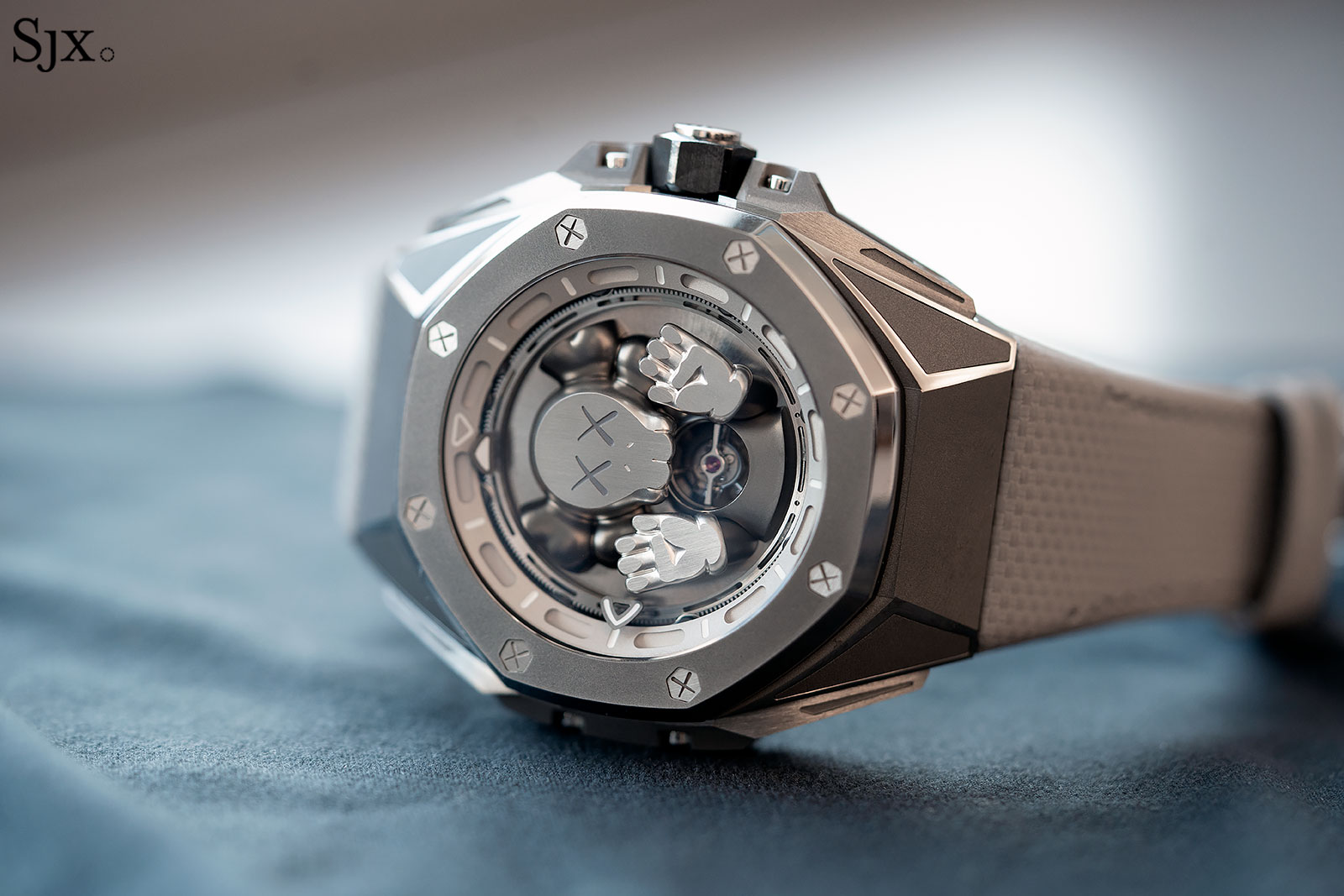
The Royal Oak Concept “Companion”
SJX: On the collaborations that we discussed, all were Royal Oak. The model is still a majority of AP’s business, even though now you have the Code 11.59 which has matured quite well. Where do you hope to see the future of the product mix in the future? Royal Oak, Code 11.59 and maybe others planned?
IR: We pay homage to Royal Oak but are not only the Royal Oak brand. The Royal Oak is a part of the recent history of AP. If you look at the shapes you know the Royal Oak is part of the last 52 years out of 150 years. So, what we know this brand can evolve into new spaces in shapes and from also complications.
We already play in certain complications, we don’t play in others. I believe there are opportunities in areas where we don’t play today. This is something that will see the light and not super soon, because as you know the timelines in watchmaking are long.
On Code, we believe it is a platform that has relevance in watchmaking. Why? Because the depth of the movement and the space of the case allows us to do things that we cannot do on the Royal Oak. It’s a bit like the Royal Oak Concept, that is our school for experimenting with new movements and materials. We use each pillar of the collection for their natural destination.
What we are doing now is to be very clear on the unique movements for the Royal Oak, the Offshore, and so on. We want to diversify the type of movement and complications for our families. And you will see news on the Offshore, and you will see news on the Code as well.
SJX: When you mention movements, do you mean that you are planning to have specific movements only for the Code, the Royal Oak, the Offshore?
IR: Also that, but also the display of the time can be different as well. One example is the Code 11.59 where we have the Star Wheel. That’s a movement that is different but it’s also a different way of reading the time right. That belongs to Code.
SJX: So there will never be a Royal Oak Star Wheel?
IR: No. I think it’s wrong because it doesn’t belong to the language code of the Royal Oak. It belongs and fits much better with the round case.
That’s what we are doing in terms of redefining the further strategies. Be clear on where do we do certain complications, in which pillar of the brand architecture.
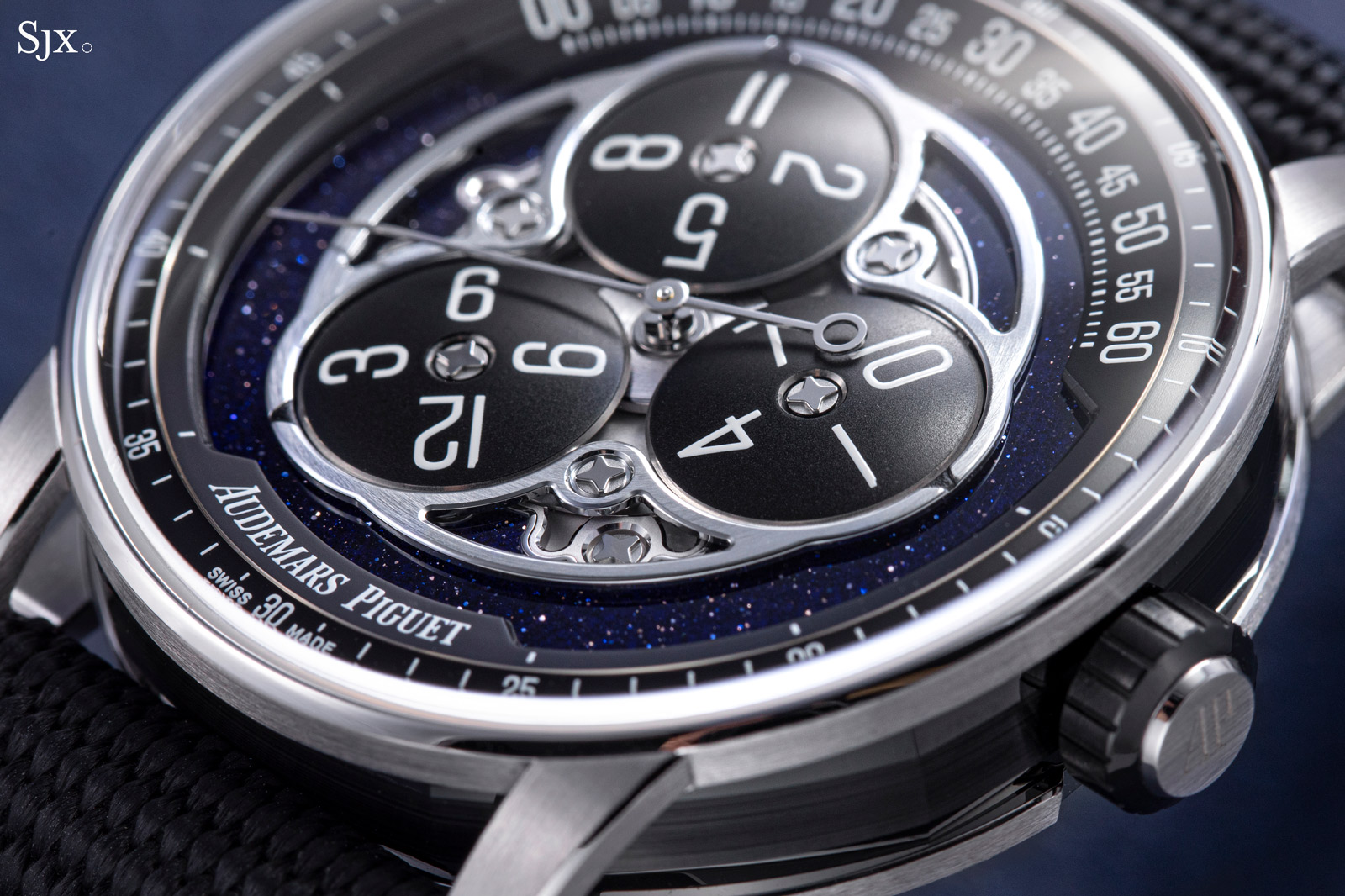
The Code 11.59 Star Wheel
SJX: You also mentioned shapes. I think historically AP has always had watches in the catalogue that are not round. I think probably now is the first time in the history where almost everything is round, even the Royal Oak has a round dial. Do you foresee going back to watches that are shaped?
IR: In our AP House you have seen other shapes [in the historical display]…
SJX: I think that’s an opportunity, especially because AP has a lot of interesting shapes for the vintage watches that have been absent for quite long.
IR: That will take time.
SJX: So this year you celebrated the anniversary. I know, of course, you cannot talk about what you’re going to do in the future, but can you sort of just share in general terms, where you want to take the brand in terms of product, in terms of complications?
IR: I can share that there are complications we do not have today that we will have tomorrow, in sizes that are also smaller.
We are open to new risks. We will continue to play with new forms of decoration that pay homage to traditional watchmaking. And we will continue learning new ways of showing time in an ergonomic way. So stay tuned.
SJX: Earlier, we talked a little bit about AP’s industrialisation. Where do you envision AP being in terms of a manufacture, in terms of the scale, size or what you are able to do?
IR: We envision excellence above anything else. We envision a growth in research and development and a growth in complication. Not necessarily a massive growth in quantity, because this is not our manufacturing strategy and brand strategy. When we think about manufacturing we think excellence, innovation, ideas and manufacturing quality.
SJX: Last question, I speak to many watch collectors, and in the last couple of years, there has been increasing criticism about distribution, unavailability of watches. It’s not just at AP, but for many luxury brands that are successful. What are your thoughts on this and how do you respond to this kind of complaints?
IR: Again, I start with asking people to come and visit the manufacture, like you. People who have seen the way we make watches understand that this scarcity is not driven by the desire of scarcity. It’s driven by the strategy of how we produce watches and the level of perfection we seek. We cannot do that with greater quantity.
We will not compromise on complications as well. To assemble and produce a complication, it takes two, three times more time than a simple watch.
Of course, we try to open up as much as we can to new clients but we will never compromise quality and complications.
Back to top.